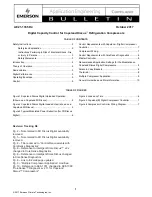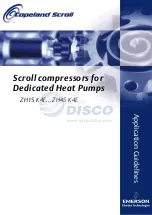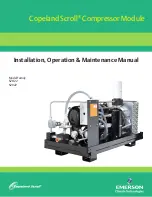
This appliance is not intended for use by young or infirm persons unless supervised by a
responsible person to ensure that they can use the appliance safely. Young children should be
supervision to ensure that they do not play with play with the appliance.
The appliance is not to be used by persons (including children) with reduced physical, sensory
or mental capabilities, or lack of experience and knowledge, unless they have been given
supervision or instruction.
Children being supervised are not to play with the appliance.
WARNING.
Before connecting a tool to a power source (mains switch power point receptacle,
outlet,etc.)besurethatthevoltagesupplyisthesameasthatspecifiedonthenameplateof
thetool.Apowersourcewithavoltagegreaterthanthatspecifiedforthetoolcanresultinseriousinjury
to the user, as well as damage to the tool. If in doubt, do not plug in the tool. Using a power source with
a voltage less than the nameplate rating is harmful to the motor.
Alwaysremovetheplugfromthemainssocketbeforemakinganyadjustmentsormaintenance.
• Toreducetheriskoffireorexplosion,neversprayflammableliquidsinaconfinedarea.Ifsparks
comeintocontactwithpetrolvapoursorsolvents,theymayignitethevapoursandcauseafireor
explosion.
• Always operate the compressor in a well ventilated area. Do not smoke while spraying. Do not
spraywheresparksorflamesarepresent.Keepthecompressorasfarawayfromthesprayareaas
possible.
• The solvents trichloroethane and methylene chloride can chemically react with the aluminium
used in some paint spray guns and form an explosion. If these solvents are used, ensure that only
stainless steel spray equipment is connected. The compressor is not affected by the use of these
solvents.
• Never directly inhale the compressed air produced by a compressor and do not use it for charging
breathing tanks.
• Do not use welding equipment in close proximity to the compressor. Do not weld anything to the air
tank of the compressor: this could dangerously weaken the tank and will void the warranty.
• Do not use the compressor outdoors when it is raining or on a wet surface; either situation could
cause an electric shock.
• Always maintain a safety distance of at least 3 meters between the compressor and the work area,
Ensure that the compressor is on a stable surface.
• Always use the handle to move the compressor.
• Never let the compressor come into contact with water or other liquids, as the appliance is live, this
could cause electrocution or short-circuits. Never use the appliance with bare feet, wet hands or wet
feet.
• Never pull on the power cable to disconnect the plug from the power outlet or to move the compressor.
• The compressed air produced by the compressor cannot not be used for pharmaceutical, food or
medicalpurposesortofilltheairbottlesofscubadivers.
• Do not cover the air inlets on the compressor.
• Compressors and lines reach high temperatures during operation. Avoid contact! Risk of burns!
• Gases or vapours drawn in by the compressor have to be kept free of constituents that may cause
fireorexplosionsinsidethecompressor.
• Whenyoudisconnectthehosecoupling,holdthecouplingelementinyourhandtopreventinjury
from the whiplashing hose.
• Never point the blow-out gun at other persons and never use it to clean clothes that are still being
worn.
• Be certain to read all the labels on the containers of paint or other materials to be sprayed. Closely
follow all safety instructions. Use a respirator mask if there is a chance that you might otherwise
inhale the spray material. Carefully check the effectiveness of any respirator mask you intend using.
• Always wear safety goggles or glasses when using the air compressor. Never point the nozzle of an
accessory towards any part of your body or towards another person.
• Keep the compressor at least 300mm from the nearest wall to ensure adequate ventilation for
cooling purposes.
• Protect the air hose and cordset from damage. Inspect for weak or worn spots regularly and replace
if necessary.
• Avoid using an extension cord with this product. Use additional air hose instead of an extension
cord to prevent power loss and possible damage to the motor. Use of an extension cord voids the
warranty.
• Always switch off the compressor before switching off the power or removing the power plug.
• After using the compressor, switch off the on/off button, disconnect the power supply and release
any remaining pressure.
• Do not attempt to remove any part of the machine whilst it is under pressure.
• Use safety equipment including safety goggles or shield, ear protection, breathing or respirator
mask and protective clothing.
Wear goggles, wear earmuffs, wear a breathing mask
Never apply the outlet air of this compressor directly on to any part of a person’s body. Do not attempt to
blocktheairoutletwithyourfingeroranypartofyourbody.
The tool must be used only for its prescribed purpose. Any use other than those mentioned in this
Manual will be considered a case of misuse. The user and not the manufacturer shall be liable for any
damageorinjuryresultingfromsuchcasesofmisuse.
The manufacturer shall not be liable for any changes made to the tool nor for any damage resulting from
such changes.
Even when the tool is used as prescribed it is not possible to eliminate all residual risk factors. The
following hazards may arise in connection with the tool’s construction and design:
• Damage to the lungs if an effective breathing mask is not worn.
• Damage to hearing if effective earmuffs are not worn.
• Damage to the eyes if effective safety goggles or shield are not worn.
WARNING.
In the event that an air line is cut or broken, the air supply must be turned off at
the compressor. A broken air line which is not supported is extremely dangerous and can whip
around very quickly, both with the capability of striking people, and blowing foreign particles into
the air.
Do not attempt to catch the air line but immediately keep bystanders well clear and turn off the air
supply to the hose, turn off the compressor at the On / Off button, and then remove the hose from the
compressor.
AIR COMPRESSOR SAFETY WARNINGS
WARNING!
Read all safety warnings and all instructions.
Failure to follow the
warningsandinstructionsmayresultinelectricshock,fireand/orseriousinjury.
Save all warnings and instructions for future reference. The term “power tool” in the
warnings refers to your mains-operated (corded) power tool or battery-operated (cordless)
power tool.
1. Work area safety
a.
Keep work area clean and well lit
. Cluttered or dark areas invite accidents.
b.
Do not operate power tools in explosive atmospheres, such as in the presence of flammable
liquids, gases or dust.
Power tools create sparks which may ignite the dust or fumes.
c.
Keep children and bystanders away while operating a power tool.
Distractions can cause
you to lose control.
2. Electrical safety
a.
Power tool plugs must match the outlet. Never modify the plug in any way.
Do not use any adapter plugs with earthed (grounded) power tools.
Unmodifiedplugsand
matching outlets will reduce risk of electric shock.
b.
Avoid body contact with earthed or grounded surfaces, such as pipes, radiators, ranges
and refrigerators.
There is an increased risk of electric shock if your body is earthed or
grounded.
c.
Do not expose power tools to rain or wet conditions.
Water entering a power tool will
increase the risk of electric shock.
d.
Do not abuse the cord. Never use the cord for carrying, pulling or unplugging the power
tool. Keep cord away from heat, oil, sharp edges or moving parts.
Damaged or entangled
cords increase the risk of electric shock.
e.
When operating a power tool outdoors, use an extension cord suitable for outdoor use.
Use of a cord suitable for outdoor use reduces the risk of electric shock.
f.
If operating a power tool in a damp location is unavoidable, use a residual current device
(RCD) protected supply.
Use of an RCD reduces the risk of electric shock.
3. Personal safety
a.
Stay alert, watch what you are doing and use common sense when operating a power
tool. Do not use a power tool while you are tired or under the influence of drugs, alcohol
or medication.
Amomentofinattentionwhileoperatingpowertoolsmayresultinseriouspersonalinjury.
b.
Use personal protective equipment. Always wear eye protection.
Protective equipment
such as dust mask, non-skid safety shoes, hard hat, or hearing protection used for appropriate
conditionswillreducepersonalinjuries.
c.
Prevent unintentional starting. Ensure the switch is in the off-position before connecting
to power source and/or battery pack, picking up or carrying the tool.
Carrying power
toolswithyourfingerontheswitchorenergisingpowertoolsthathavetheswitchoninvites
accidents.
d.
Remove any adjusting key or wrench before turning the power tool on.
Awrenchorakeyleftattachedtoarotatingpartofthepowertoolmayresultinpersonalinjury.
e.
Do not overreach. Keep proper footing and balance at all times.
This enables better control
of the power tool in unexpected situations.
f.
Dress properly. Do not wear loose clothing or jewellery. Keep your hair, clothing and gloves
away from moving parts.
Looseclothes,jewelleryorlonghaircanbecaughtinmovingparts.
g.
If devices are provided for the connection of dust extraction and collection facilities,
ensure these are connected and properly used.
Use of dust collection can reduce dust-
related hazards.
4. Power tool use and care
a.
Do not force the power tool. Use the correct power tool for your application.
The correct
powertoolwilldothejobbetterandsaferattherateforwhichitwasdesigned.
b.
Do not use the power tool if the switch does not turn it on and off.
Any power tool that
cannot be controlled with the switch is dangerous and must be repaired.
c.
Disconnect the plug from the power source and/or the battery pack from the power tool
before making any adjustments, changing accessories, or storing power tools.
Such
preventive safety measures reduce the risk of starting the power tool accidentally.
d.
Store idle power tools out of the reach of children and do not allow persons unfamiliar
with the power tool or these instructions to operate the power tool.
Power tools are
dangerous in the hands of untrained users.
e.
Maintain power tools. Check for misalignment or binding of moving parts, breakage of
parts and any other condition that may affect the power tool’s operation. If damaged,
have the power tool repaired before use.
Many accidents are caused by poorly maintained
power tools.
f.
Keep cutting tools sharp and clean.
Properly maintained cutting tools with sharp cutting
edges are less likely to bind and are easier to control.
g.
Use the power tool, accessories and tool bits etc. in accordance with these instructions,
taking into account the working conditions and the work to be performed.
Use of the
power tool for operations different from those intended could result in a hazardous situation.
5. Service
a.
Have your power tool serviced by a qualified repair person using only identical
replacement parts.
This will ensure that the safety of the power tool is maintained.
GENERAL POWER TOOL SAFETY WARNINGS-PERSONAL SAFETY
ELECTRICAL SAFETY
WARNING!
When using mains-powered tools, basic safety precautions, including the
following, should always be followed to reduce risk of fire, electric shock, personal injury
and material damage.
Read the whole manual carefully and make sure you know how to switch the tool off in an emergency, before
operating the tool.
Save these instructions and other documents supplied with this tool for future reference.
The electric motor has been designed for 230V and 240V only. Always check that the power supply
corresponds to the voltage on the rating plate.
Note: The supply of 230V and 240V on Ozito tools are interchangeable for Australia and New Zealand.
This tool is double insulated therefore no earth wire is required.
If the supply cord is damaged, it must be replaced by an electrician or a power tool repairer in order to avoid
a hazard.
Note:
Double insulation does not take the place of normal safety precautions when operating this tool. The
insulationsystemisforaddedprotectionagainstinjuryresultingfromapossibleelectricalinsulationfailure
within the tool.
Using an Extension Lead
Always use an approved extension lead suitable for the power input of this tool. Before use, inspect the
extension lead for signs of damage, wear and ageing. Replace the extension lead if damaged or defective.
When using an extension lead on a reel, always unwind the lead completely. Use of an extension lead not
suitableforthepowerinputofthetoolorwhichisdamagedordefectivemayresultinariskoffireandelectric
shock.
The power outlet for the compressor is recommended to be protected by a 30amp residual current device


























